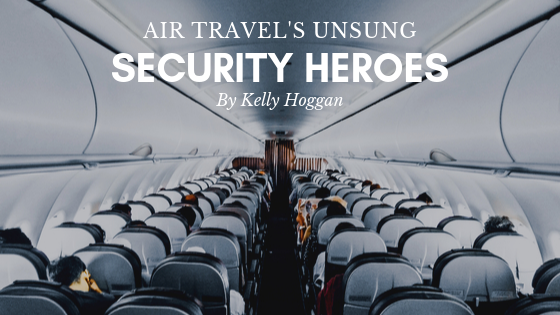This piece was originally published by Kelly Hoggan on H4-Solutions.com
_
According to the Federal Aviation Administration, approximately 2.5 million U.S. airline passengers fly more than 43,000 commercial airline flights daily from over 440 airports across the country. All those flights are protected by transportation security, which begins screening travelers well before they even arrive at the airport. And as passengers get physically closer to boarding their flight security becomes even more robust, including that provided by a group of unsung heroes known as aircraft groomers.
The people who clean a commercial jet airliner’s cabin do more than just vacuum its floors and clean its lavatories. In reality, aircraft groomers serve as a vital security layer, one of several such found at the airport and all of which help protect travelers each time they fly.

All these security layers are collectively referred to by the Transportation Security Administration and the airlines as “security in depth,” among other names. For their part, aircraft groomers contribute to effective security in depth on every airliner they clean. But how do they do it?
The exact methods employed by aircraft groomers to ensure an airliner’s cabin is secure before flight are specific and documented by each airline to ensure compliance with TSA requirements. For security reasons, though, this search methodology must remain vague. What is important to know, however, is that while groomers are cleaning the aircraft, they’re also conducting search procedures for any items that don’t belong on the aircraft.
Consider that there are many places within an airliner’s cabin which require a “search and clean,” many of which are unique to each aircraft type. From storage areas to galleys to overhead bins and many more, the aircraft groomers conduct their searches each and every day.
Take comfort in knowing, as well, that aircraft groomers have been trained to use TSA-approved cabin security search techniques, all of which airlines are responsible for consistently applying. Before they even begin cleaning the airliner you’re waiting to fly in, groomers have already been assigned to clean and search a particular section of that plane. One groomer may be responsible for lavatories, while others pay attention to the seats and the overhead bins. Other groomers are cleaning and searching floors and flight attendant jump seats and many other areas.
While they’re aboard an aircraft, groomers are also frequently tested to assess their skill in carrying out an active cabin security search. Such testing is conducted not only by TSA but also by the airlines as well as the business partner companies employing those groomers. In fact, rarely does a work week in the life of an aircraft groomer go by in which he isn’t assessed in one way or another for the quality of his security techniques.
So the next time you fly and begin wondering who’s protecting you, realize that more people than air marshals and TSA officers staffing security checkpoints are doing so. Aircraft groomers help make sure the plane in which you’re flying is as secure as it can possibly be. Yet groomers are rarely thought of by the traveling public as having much, if anything at all, to do with air travel security when the truth is they’re actually vital to it.


